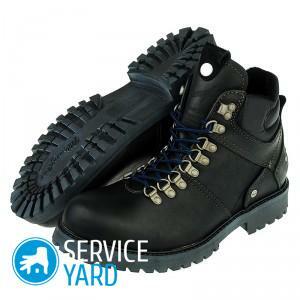
- Shoe tips for
- shoes Ice drills with self-tapping screws
- Ice drums with bulk rubber pads
- Advantages of self-made ice drills
When buying winter shoes, men and women usually pay attention to external characteristics - material, model,on how shoes sit on their feet. Of course, the sole is also inspected for practicality and maximum relief. But here the non-slip qualities of the base of shoes or boots are given a minimum of attention, and in vain - in the case of a strong ice, this quality of footwear becomes the most demanded. But what to do, when on the street very much, because not everyone can afford shoes with a special sole? In this article, we will tell you how to make thorns on shoes with your own hands so that your shoes do not slip on the ice.
to the table of contents ↑Options for studs for shoes
In winter, ice is an uncommon phenomenon, therefore, it is necessary to conduct preparatory actions by this time of year. There are so many ways to cope with the glide on the ice.
Important! Many use pads that are made of sandpaper or lubricate the sole of shoes with a mixture of sand and glue. But these methods are not very practical in solving this issue, although they are also suitable if there is no time and opportunity to create anything else.
The most reliable methods for solving this problem at home are:
- Using self-tapping screws.
- Removable rubber lining.
- Acquisition of ice drifts in the store.
Ice drills with self-tapping screws
To make the spikes on shoes with your own hands:
- You will need to take self-tapping screws and boots or boots with a thick enough sole.
- Next, screw the screws inside the shoes and carefully secure them with nuts.
In this case, the most important role is played by the length of the screws and the thickness of the base of the shoes.
Important! If you decide to use this way, then it will be impossible to wear this pair of shoes without such protection. Therefore, it is best for this method to choose a pair that will be worn as ice.
to the contents ↑Ice drifts with volumetric rubber pads
The process of making ice drifts with removable rubber pads will not take much time and effort. To make such an ice drift:
- Take a rubber thickness of about 5 mm.
- Then prepare a sharp tool that you will need in order to later cut out the patch. And most importantly - the spikes, which must be properly properly secured in the rubber lining.
Important! Always choose a rubber that is resistant to temperature changes. It should tolerate low temperatures well, should not freeze.
- When creating a rubber lining, you need to think carefully about how this pad will be attached to the base of the boots.
Important! Spikes should have a height of approximately 0.6 mm and should not be loose, and also be comfortable when walking.
to the contents ↑Advantages of the self-made ice drifts
Of course, if you do not want to do this yourself, you can just buy ice drifts in the store. Today in many outlets there is a wide range of the most diverse models, which are made of different materials. But you will agree, made spikes on shoes with their own hands, have a number of advantages:
- Convenient.
- Practical.
- Save your money.
- Take a small amount of time to manufacture.
Ice drifts can protect you in non-flying weather from serious injuries, the risk of which is great on ice. For the winter try to buy the most comfortable shoes. We wish you to move extremely safely in the winter. And having made thorns on shoes with your hands, you can feel more confident during the ice.



